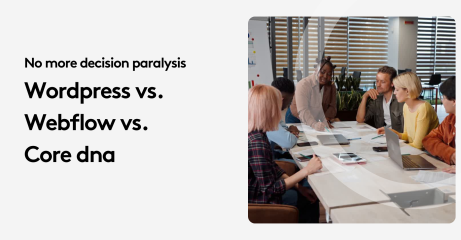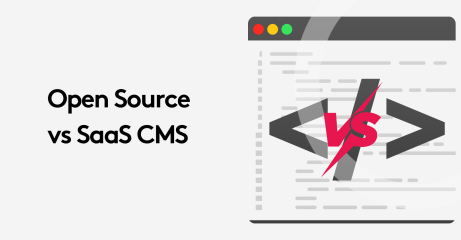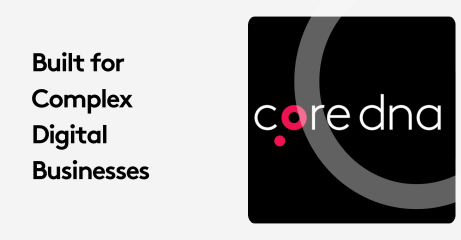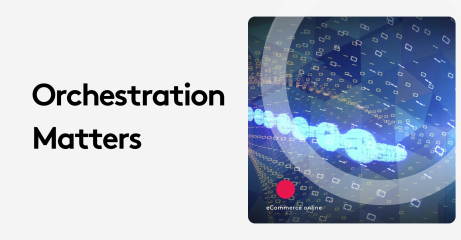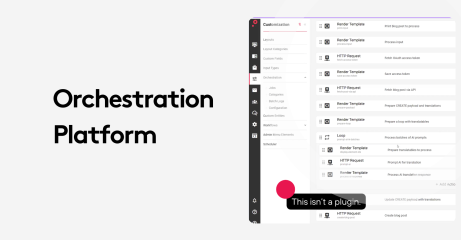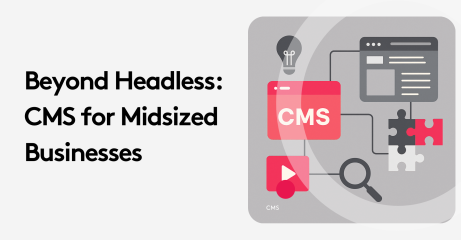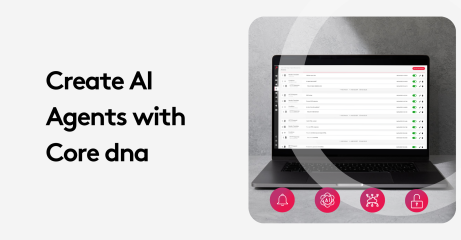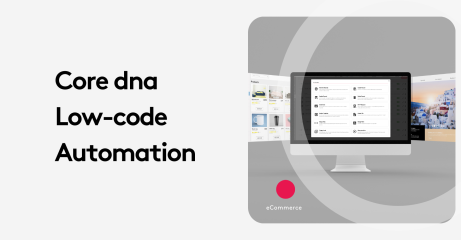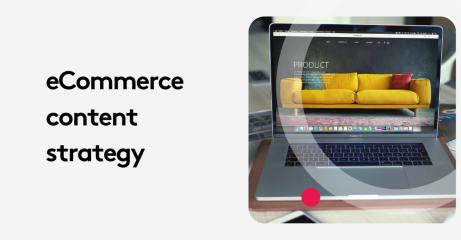How to choose the Right Omnichannel Content Platform
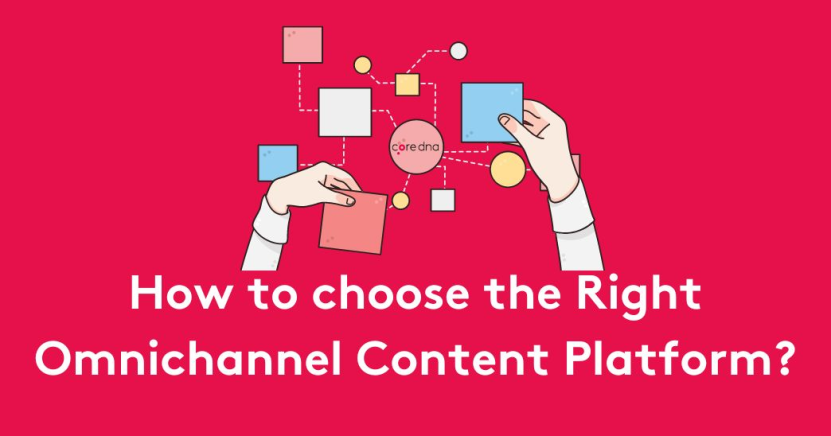
When it comes to engaging your customers and prospects today, personalization is the name of the game. Data from a recent McKinsey study showed over three-quarters of consumers - 76 percent - consider personalized communications essential when considering brands. Smart businesses are taking notice and deploying an omnichannel approach to their brand experience to reach customers more effectively.
Omnichannel and personalization go hand-in-hand. To have a truly omnichannel strategy, you need a platform that allows you to deliver content to customers everywhere. Whether a customer is shopping online, scrolling on social media, or using your brand’s app, you need to deliver targeted, optimized content to every channel at the right moment.
This guide will show you how to select the best omnichannel content platform for your business so you can effectively engage your customers.
Key takeaways
- Omnichannel content delivers highly personalized, customer-centric experiences across all channels.
- Personalization drives repeat engagements, increasing brand loyalty and revenue
- Legacy content management systems cause content silos and brand inconsistencies that can hinder customer engagement
- Hybrid CMS offers the power and flexibility of a headless CMS with the usability of more traditional platforms.
On this page:
Omnichannel marketing, a consistent experience
Content is what drives the majority of customer interactions. Every marketer methodically prepares emails, SEO, and social media content to communicate with new and existing customers. Now, omnichannel allows businesses to take their marketing efforts a step further.
An omnichannel strategy allows you to optimize your content and deliver it across all channels instantaneously. This capability is increasingly important to markets as consumers demand more personalized brand interactions. With an omnichannel platform, you can send unique content to customers wherever they are to promote sales, new products, brand activations and major calendar events such as holidays and birthdays.
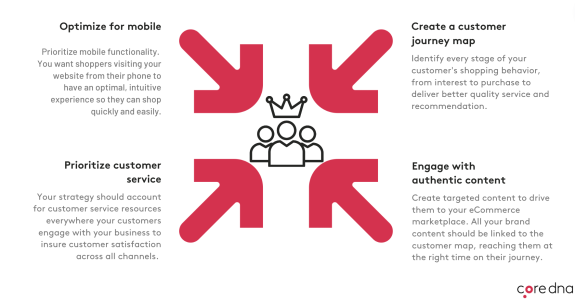
The same study from McKinsey illustrates how effectively personalization increases customer loyalty and drives repeat purchases. Personalization can increase brand revenue by as much as 25 percent, all it takes is for a company to understand how to leverage customer data.
The more repeat interactions you have with your customers, the more data you can collect and turn into intimate digital content. If you’re a digitally savvy business, you can take one quality consumer interaction and turn them into a lifelong customer.
Omnichannel is on the rise because businesses understand the value of having a single source of truth where their content is centralized and standardized. Customers are hungry for a cohesive digital experiences tailored to their interests and needs. Omnichannel content ensures businesses can meet customer expectations time and again.
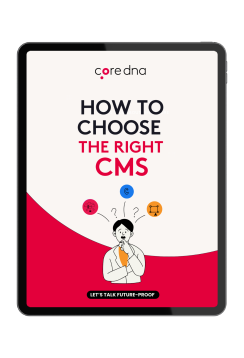
Guide: How to Choose the Right CMS: The Definitive Guide
The only guide you need to choosing the right CMS platform to help drive business growth.
What is an omnichannel marketing content platform?
An omnichannel marketing platform is a customer experience software that makes it easy for businesses to deliver a highly personalized customer experience on all channels. Rather than worry about creating and managing content across all marketing platforms, omnichannel solutions centralize the whole process.
Why is omnichannel content indispensable?
It feels like new marketing channels are popping up every day, and legacy systems just aren’t cutting it anymore. It’s hard enough to manage content across all mediums, let alone personalize the messaging. The shortcomings of these platforms include:
- Content has to be created and optimized for every individual channel. This is especially cumbersome for businesses with multiple brands or products that they want to promote on different channels.
- Limited integration options between platforms make it impossible to create an omnichannel strategy.
- Content siloes create brand and messaging inconsistencies that can confuse customers.
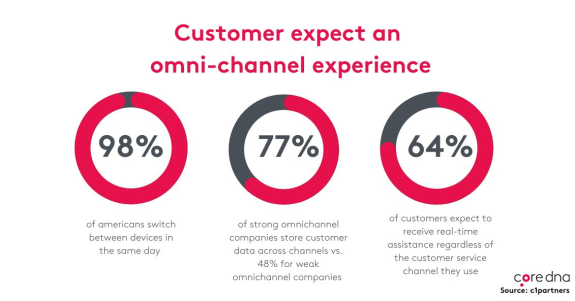
On the other hand, omnichannel platforms act as a “single source of truth” where content is easy to find and ready to use immediately. Omnichannel CMS platforms make it possible to:
- Deliver a seamless, unified message across all channels
- Access real-time customer data to elevate the customer experience on any channel
- Use automation to personalize customer interactions
- Tailor messaging to assist customers at every stage of their journey
- Manage all content from one central location and avoid duplicating content
- Reach a wider audience
- Maintain brand consistency
Most importantly, omnichannel platforms drastically augment the customer experience. Omnichannel platforms not only allow you to send the right content at the right time, but you can also integrate virtual inventory into brick-and-mortar locations. By adding digital kiosks to your stores you can present your full inventory to customers, not just what’s physically in the store.
Another popular omnichannel feature allows customers to make purchases online and pick up their orders (BOPIS) at the closest store. Features like this are increasingly important for eCommerce businesses as they cater to different shopper preferences.
Overall, omnichannel allows you to learn about your customers, understand their shopping habits and create the best experience possible while increasing sales. The better you know your customers, the more enjoyable and convenient you can make shopping for them and the stronger their relationship with your brand will be.
What platforms support omnichannel content strategies?
An omnichannel approach allows you to use any content wherever and whenever you need it. But when it comes to building an omnichannel content strategy, you’ll need the proper tools to support your efforts. Building and managing an omnichannel strategy is challenging using legacy systems and is instead best done using either a headless CMS or Hybris CMS.
- Headless CMS for omnichannel content
A headless CMS is a back-end-only system that makes content accessible via an application programming interface (API) for display on any device. You can use a headless architecture to manage your content without worrying about how it will be delivered.
Because you can work how content will be presented separately from the content itself, a headless CMS removes much of the need for a complex user interface. With a headless architecture, you can maintain brand consistency, store all your materials in one place and update it all at once.
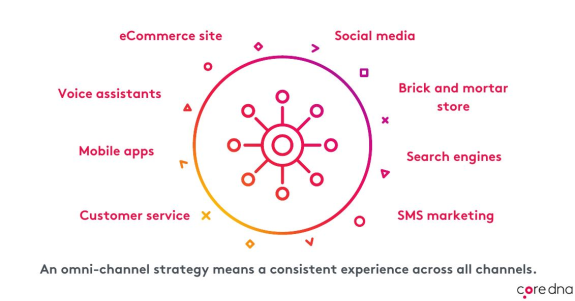
- Hybrid CMS for omnichannel content
The biggest advantage of a headless CMS is that it can distribute content to any device you need. The drawback is that, because his type of platform doesn’t have a front-end interface, it isn’t necessarily the most marketer-friendly option.
A hybrid CMS, however, is great for marketers and developers alike. Hybrid platforms give developers all the freedom to create and deliver omnichannel content while also ensuring marketers have a powerful user interface.
Core dna see the value in providing the flexibility of a headless CMS with user experience of traditional CMS platforms. Core dna helps brands produce omnichannel experiences through websites, apps, portals, IoT devices and more. Our platform offers rich experiences and customizations for both users and admins.
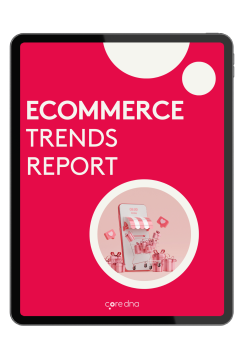
eCommerce Marketing Trends
37-pages of the latest eCommerce & marketing strategies to succeed in the upcoming year!
From the rise of mobile shopping apps to the growth of social commerce and augmented reality experiences, there are many different ways that people shop today.
What features should an omnichannel content platform have?
At the end of the day, your omnichannel content strategy should benefit the customer more than anyone. Your platform is just a tool for carrying out this mission. Essential tools for your CMS are detailed below.
Personalization
If personalization is the key to improving the customer experience, building brand loyalty, and increasing sales, then you better pick a CMS that makes this possible. You’ll have to deliver personalized ads, emails, social posts, and customer service interactions, so you need a platform that allows you to connect with customers on every channel and device.
Cross-platform publishing
Many CMS providers partner with other vendors, limiting the channels you include in your omnichannel efforts. You want to choose a platform that allows you to manage your marketing efforts on all channels.
Usability
As we just discussed, a headless CMS requires proper technical skills. You don’t want to select a platform and then wind up unable to use it. You do want a platform that makes it easy to manage and optimize content across multiple channels.
Security
Businesses collect a lot of customer data and it must remain protected. Considering how common data breaches area, you want a platform with robust security measures. Your CMS should allow you to encrypt the appropriate data and control who has access to it.
Core dna can customize each visitor’s experience through the Personalization application and the Secure Member applications. These applications allow you to tailor the page design and content down to the individual.
You sure can. Global brands trust Core dna to build and operate eCommerce websites in multiple regions and continents. Our eCommerce feature set includes everything from inventory management to detailed analytics.
See Core dna’s eCommerce features.
A 15-minute overview of different marketing, eCommerce & intranet solutions that run on Core dna.
Video transcription: Core dna Solutions overview
Welcome to the introduction of Core dna. Over the next few minutes, I'm going to take you through some of the solutions that we've developed on Core dna to give you an insight into the versatility of the platform and also what is possible from one single platform with endless solutions.
So, starting off, we have of our friends at Nintendo. This is a site that delivers over 200 different assets that drives all the marketing for the business in Australasia. There are many features on this site to go through, but some of the key ones are each of the games gets their own page and for each page it can actually have its own built in site.
Recently, Nintendo moved into doing some ecommerce from the same site and also provides their customer service and support from here. So anytime someone has some questions they need answer, they can come into the portal and have a look at the questions and answers and also engage with the through a ticketing system.
Another type of marketing site. It's driven by a company called Seek. This is a very good example of an integrated platform to a master platform. So here the main business that Seek are involved in is job search.
So this job search environment here is driven by their own platform, their own server farm and their own infrastructure. But anytime you go outside of the job search, you end to coordinate seamlessly.
And this has been done using. Reverse proxying and our sophisticated infrastructure to be able to easily transition people from one site to another while maintaining the look and feel and also the site credentials.
Here is another example of a marketing site where we are able to provide content. We're able to provide home designs and more of a B2B offering for people looking for something to showcase their customers.
Another example here is King and Wilson 100 year old removal company who uses core DNA to drive all their legion. So this site itself not only provides the content marketing, but also provides the quoting engine for people to be able to convert from an inquiry through to the implementation right through to their back end system.
Coordinate doesn't just do content, but it also can do what we call directories. Frontier is one of the largest, if not the largest, Asia Pacific tour operator who brings concerts and comedy tours and has a database of over 3 million people.
What we have here is an example of the platform where Frontier is able to showcase each of the events, the venue dates, people can buy tickets, we're able to see some of the videos, some other types of media in terms of music, various packages, and also tour information that people may be interested in.
All the tours that are currently running are here and what we also have is everything to us stored since the organization started. The challenges with a site like this. Is the spikes in traffic that occur when people are looking to buy their tickets for concerts.
They all come at once and try to get their ticketing as quickly as possible. Venues to Events is another example of a directory system. And here what we showcase is venue operators, suppliers and wedding operators in one easy to use website.
We can see here the various search criteria that you can have. You could pick a state. Once you pick a state, you could pick a region, you could pick types of venues you're interested in and then once you find your venue you can just press search and the system will go away and find all the venues.
Now venue operators have the ability to log into the system and provide updates to their content, to their function information, to image information and provide specials. In addition, all inquiries are actually sent through the venue and are managed through the platform. This is another example of a similar system and similar implementation. But this is more for restaurants and function venues. So you click on restaurants for a particular city and you can scroll through and see the restaurant.
And again the venue operators here have the ability to go in and update their imagery and also take bookings and function inquiries. We also do a lot of work for government and so here is an example of a government site in one of the dates of Australia and this is really three sites in one.
So you can see here we have community health care professionals and health service providers and we can actually switch between them and see the information that's presented. In addition, here they run according to Events platform and people are able to look at events that are up and coming. And register for them. And in the back end there is the ability for the administrators to administer the system in terms of the event. Another example of a government site more around donations and making people, people aware of what's going on.
Again, they run the events environment and they're able to gather donations. cordine also has a recruitment system built into it for jobs and job search. And this is an example of some of the abilities that we have.
So you can actually filter through job types and find jobs that are posted here. And candidates can also leave their own resumes and engage with the recruitment company directly. One of the major pillars of the platform outside of content is its ecommerce capabilities and we offer a variety of ecommerce.
So starting with a consumer ecommerce so this is a good example of a consumer site where people can engage. We have the shopping cart and within the shopping cart we can have hundreds of features including faceted search, a variety of really cool features in terms of making products seamless and easy to engage with and be able to run sort of endless scrolling for those that are interested in it.
The look and feel of all these sites varies considerably but the majority of everyone runs off the same core platform. So moving along, what we also have is an example of language modification. So typically run over 30 different sites around the world and each one has its own language and products and.
And eCommerce back end in terms of warehousing and ERP system. In addition, Tivoli also use Core dna to drive their media center. They can select images and then download those images either as a package or as a zip file to be used in their own media.
It also supports videos and other forms of media like documents and so on. So this is Ego Pharmaceuticals. It's a pharmaceutical provider.
So these companies require a higher level of security but also a significant ability to offer various standards and documentation for the products that they sell. We also have other customers that are what we call direct-to-consumer clients who manufacture their own products and then have multiple brands where they distribute those products, both in an omnichannel way.
PMI is a good example of this. This is a company that produces thermoses on a number of different brands and Core dna drives all the different brands themselves. So from their major brand called Stanley, where you have thermoses and vacuum flasks right through to Slant, which is Party products, and Aladdin, which is different types of water bottles and coffee mugs that they offer. Northeast Nursery is another example of an eCommerce platform that we support.
The reason this is. An interesting platform to go through is that it's complexity in terms of the products that it has. So you have everything from turf right through to seeds, right through to plants, supplies in terms of clothing, landscape supplies and also seasonal supplies like at the moment snow shovels and ice melts and so on.
Core dna here provides a flexible infrastructure for people to get to what they need really quickly and once they've arrived, they can then refine their search based on the criteria that they have.
Northeast Nursery is also now moving into what we call a wholesaler portal. And in this example here, what we're seeing is we're moving far more to an eCommerce that is easy for people to use and engage with.
We've rewritten the back end system so it communicates asynchronously so if someone's on their mobile phone, they can quickly add something to the carton. And you can see there that I'm adding two items one after the other or they can favorite a product to then have a favorite for later on when they want to reorder these products.
The wholesale portal uses a different engagement on the front end to make it fast and also to be easy to use on a mobile. Gifting is also another area that we do well with. So we have a Langham Hotels as a customer and we're able to create gifts and gift vouchers.
And these vouchers then processed using a system at the back end and the vouchers are sent out to the customer in paper form and they're able to be redeemed. Either partially or wholly at the hotel itself.
So there's a management system around the gifting that's provided. We also have a large number of B to B clients who use the eCommerce for their beta B applications. So we have here a company called Designer Doorware that uses core DNA for all its door handles.
And you're able to configure the door handle and you're asked a series of questions. And once that's done, you can actually add it to your shopping cart. And once you're ready to go, you can then process your shopping cart login and receive quotes or send a spec sheet to yourself.
Fuse code is also another good example of the reason I'm showing you this is that it's an example of a complex product. So low voltage fuses and the fuses are categorized in a variety of ways and people then want to be able to engage with a specific category of fuse they can, and within that you can see the different voltages and currents that are available.
This site does not engage in any transactions, but people can send a quote for the particular fuse that they want to inquire with. In addition to all those products, we also have solutions for the internet.
So a number of our clients use our product to drive their intranets. So they have document management, they have various dashboards that they run for themselves, they're able to promote news. And here you can see a company that has multiple retail outlets that uses the product for merchandising, for all the people and policies, for a bunch of their marketing, finance, retail operations and supply chain.
Another example of an Internet is Teamflow. This is the product that Courtney uses itself and this system offers four major functions and solutions. Firstly, project collaboration. So you're able to go in and see the various projects that you're you're working on and within those projects you're able to see tasks, activity, milestones, timesheets and the people that you're collaborating with.
It has a support ticketing environment where people can lodge tickets either through email or through the ticket system itself and others can collaborate on it. A Wikipedia that allows you to create a series of markdown or HTML or any other forms of pages that can then be used for documentation and to be searched.
Ideation engine for people to engage with interesting ideas they may have. And a time sheeting system that allows you to capture time shooting for service workers on a daily basis. So you can see progress, you can see how accountable they are, what kind of billable versus non billable, and how they're progressing to budget.
All this is also wrapped in a reporting engine that can produce a number of different reports for you to drive the business. I hope this has given you a good insight into what's possible.
Schedule a one-to-one consultation with your product specialist
Here’s what you can expect:
- Walkthrough: An introduction of the Core dna platform
- Analysis: Personalized recommendations based on your business needs.
- Case studies: How other businesses have used Core dna to scale more efficiently
Core dna software enhances usability in a number of ways.
Reducing page loading times through a streamlined architecture. Supported with the use of efficient caching and a global network of CDNs
Allowing Administrators to create components that are well structured and produce consistent content across your site
Using optional templating that can make your site responsive across mobile and desktop devices.
Use a familiar navigation layout across the whole site. Making it easy for a visitor to find what they need.
Use consistent headings and subheadings with your content. Through structured content, all content elements can be defined once and managed from one spot. Making the appearance of the content consistent.
Modern image formats and formatting. Core dna provides administrators tools that manage images and convert them to modern formats for speed and efficiency. The images are automatically process to the right height and width, making them fast and responsive.


